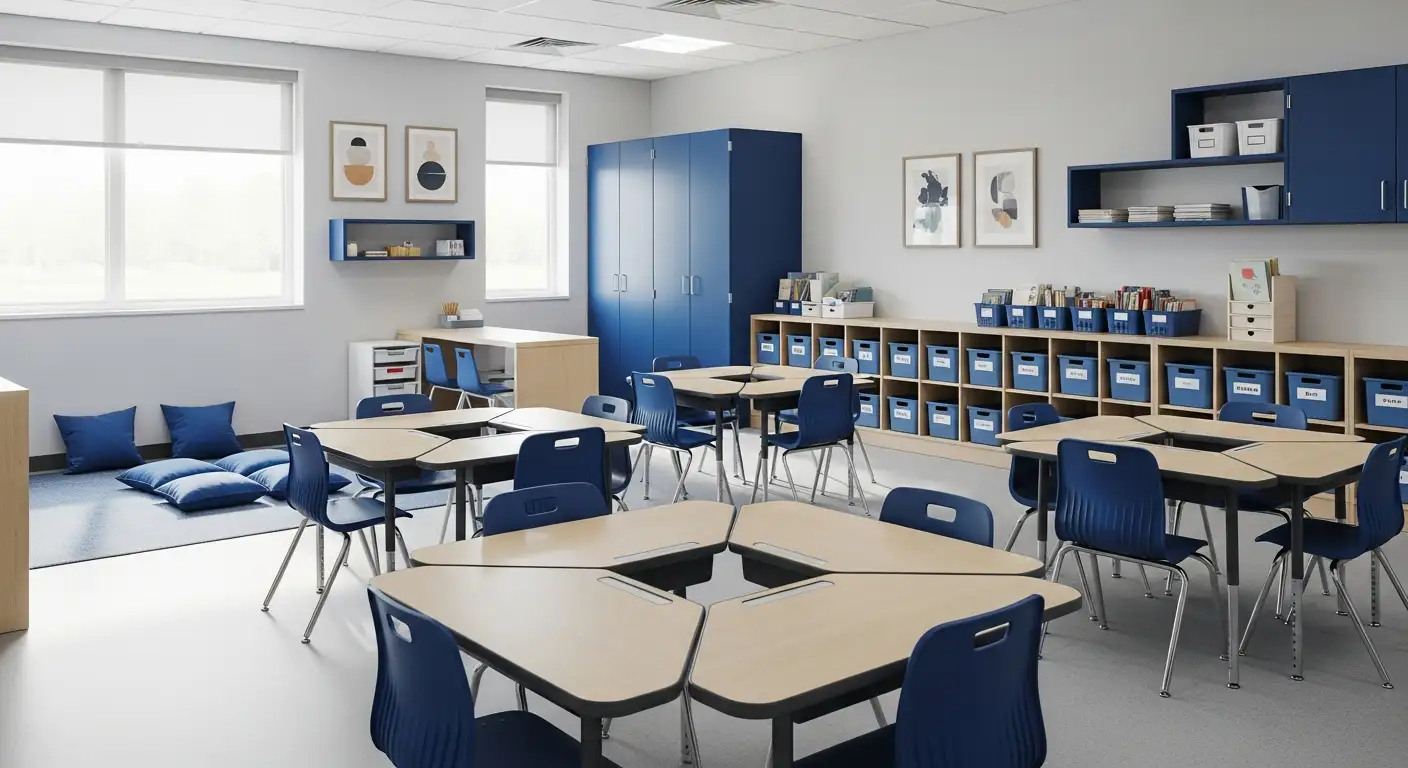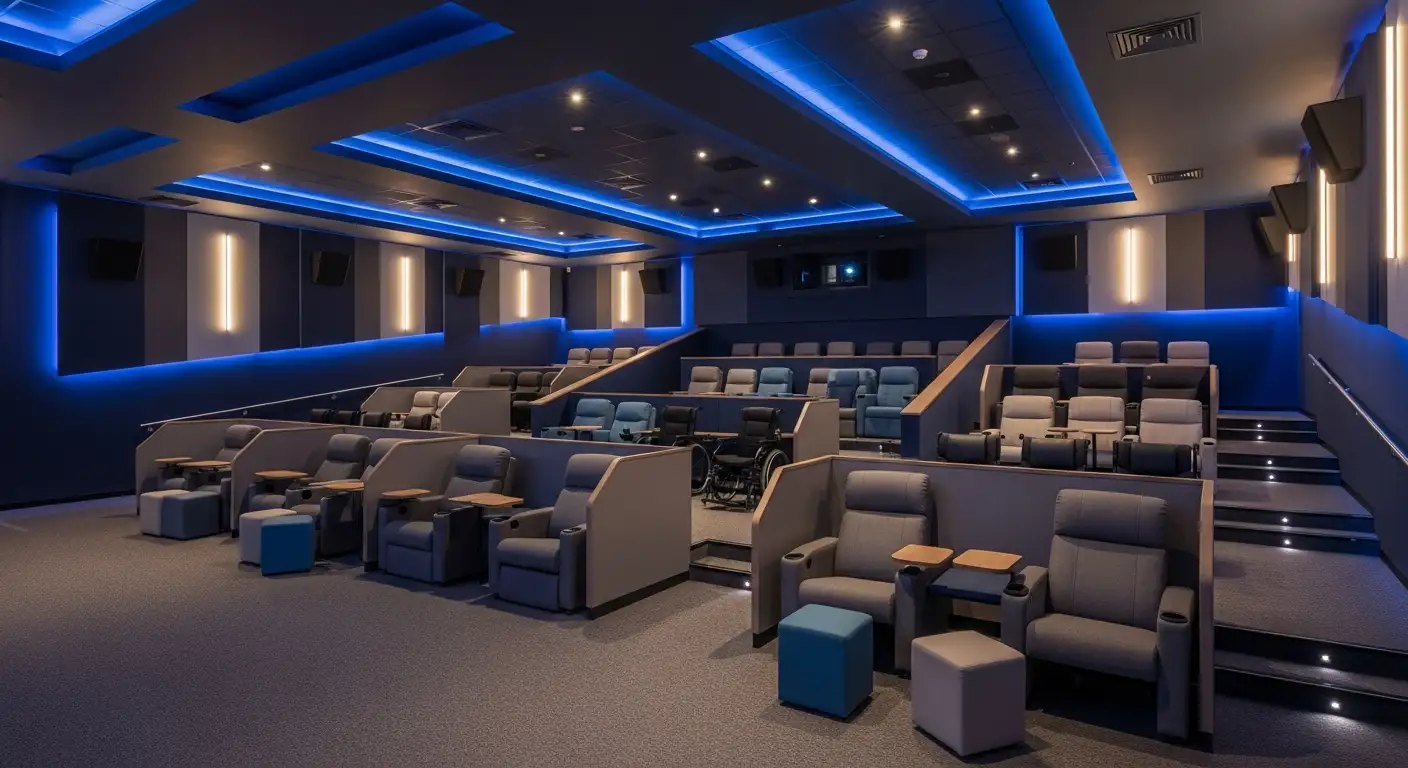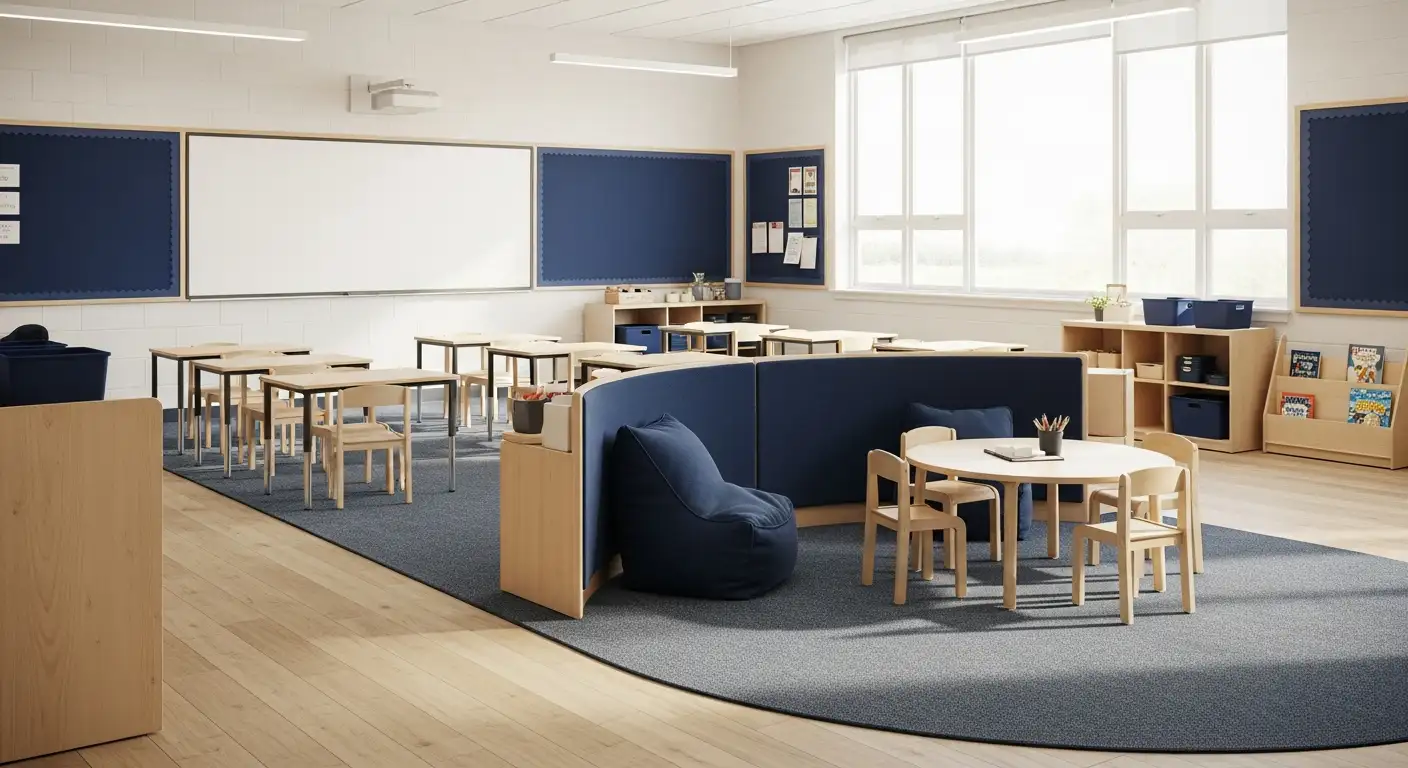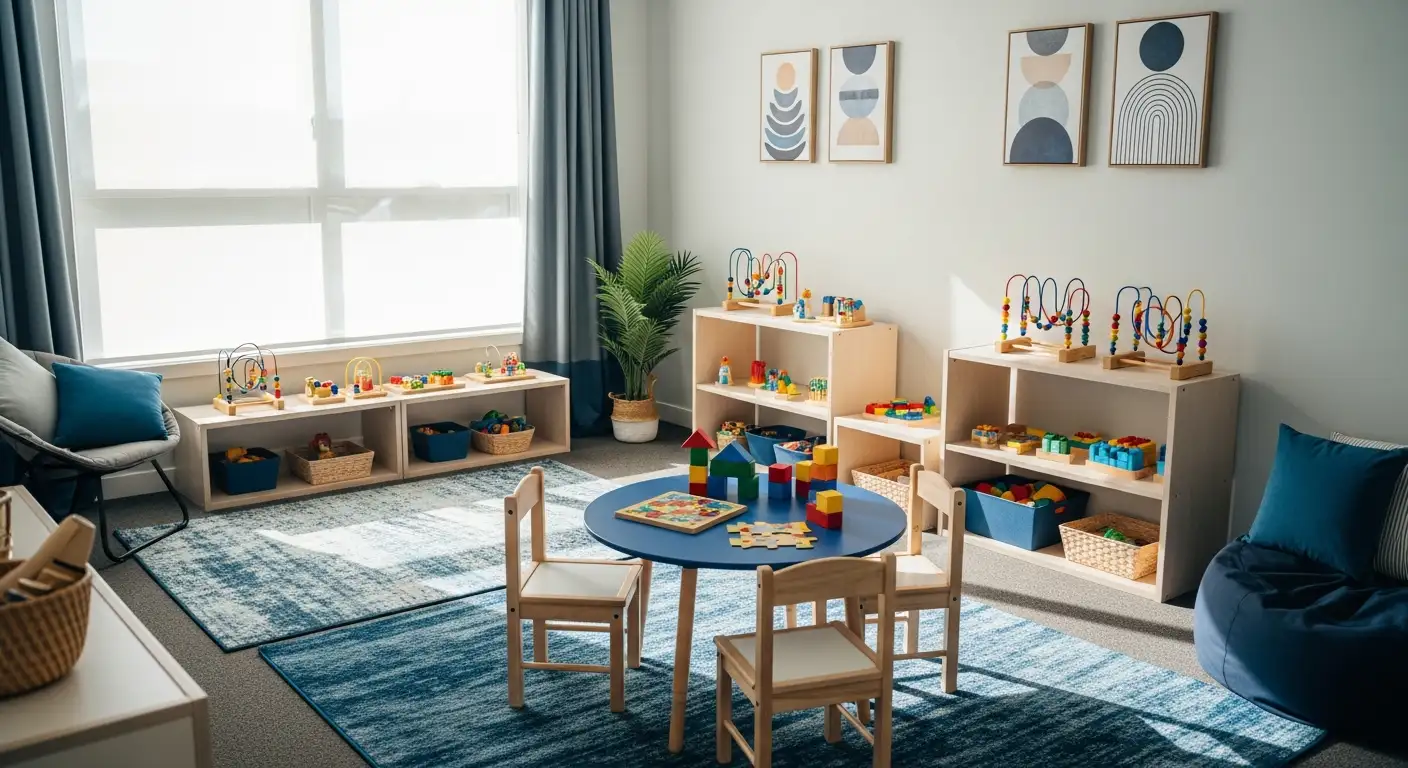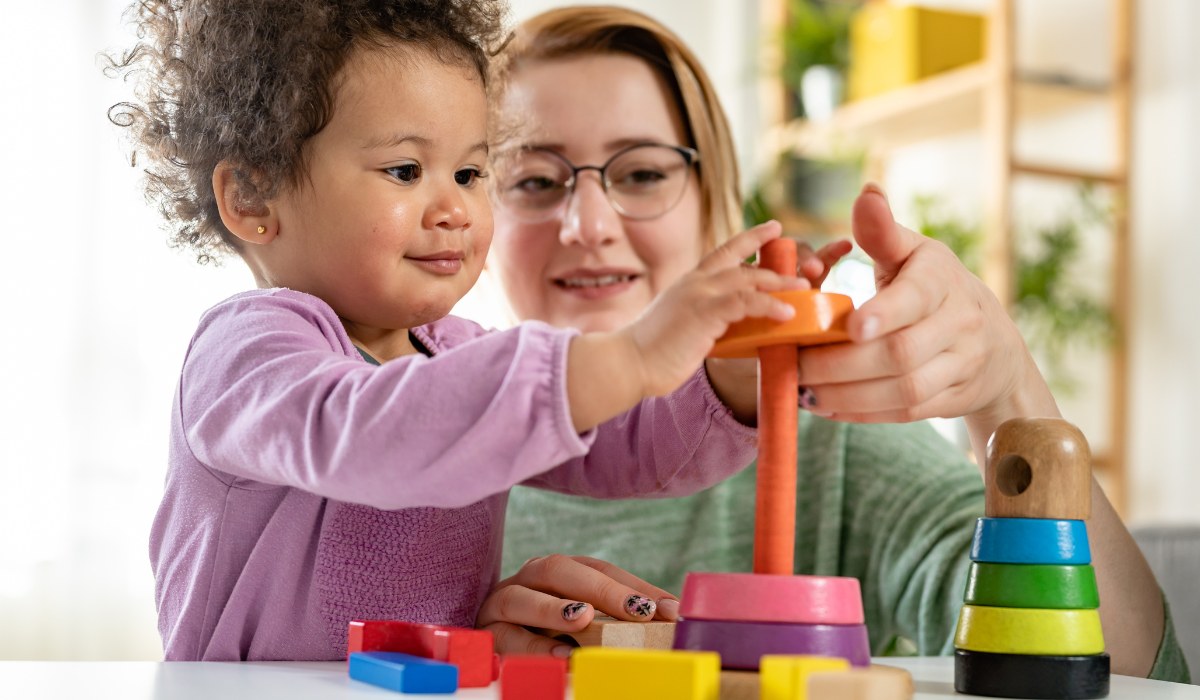Supporting Autistic Children in Developing Friendship Skills
Bridging Social Gaps: Effective Strategies to Cultivate Friendships for Children with Autism

Understanding the Social Challenges of Children with Autism
Children with autism spectrum disorder (ASD) often face unique challenges in social interaction, including difficulties in initiating communication, maintaining eye contact, and interpreting non-verbal cues. Despite a desire to connect, many feel overwhelmed or lack the necessary skills, which can lead to social avoidance or attention-seeking behaviors. Supporting these children in developing friendship skills requires comprehensive, individualized strategies that address their specific strengths and challenges.
The Role of ABA Therapy in Social Skill Development
What is ABA therapy?
Applied Behavior Analysis (ABA) therapy is a scientifically grounded approach designed to understand and influence behavior by analyzing environmental factors. It aims to increase beneficial behaviors such as social skills and communication while reducing disruptive behaviors. ABA programs are highly personalized, crafted by certified behavior analysts to address each child's unique strengths and challenges. Techniques include positive reinforcement, prompting, and breaking down skills into manageable steps. ABA therapy can be delivered through structured methods like Discrete Trial Training as well as naturalistic approaches such as Pivotal Response Treatment.
How ABA supports social skills
ABA therapy uses targeted strategies to develop social skills in children with autism, often emphasizing repetition and practice to reinforce learning. It teaches critical facets of social interaction, including initiating interactions, reading nonverbal cues, sustaining eye contact, and sharing enjoyment. Interventions such as role-playing, storytelling, video self-modeling (VSM), and social narratives help children grasp social rules more effectively. Pairing children with peers who naturally model social behaviors encourages organic social learning without pressure. School-based ABA also allows children to practice real-world social interactions, bridging skill acquisition with natural environments.
Evidence base for ABA in autism treatment
ABA is widely recognized as an evidence-based treatment for autism spectrum disorder. Numerous studies confirm its effectiveness in improving social communication, emotional regulation, and overall social engagement, particularly when therapy begins early. Tools like VSM have demonstrated rapid skill acquisition and long-term maintenance. The Elevation Autism Center, among other specialized clinics, employs ABA therapists trained to offer structured support, family coaching, and ongoing assessment to optimize outcomes. This approach not only enhances social competence but also fosters confidence and independence, providing children with lasting skills that benefit their friendships, academic progress, and emotional wellbeing.
Who Delivers ABA Therapy and Their Qualifications

Types of ABA Professionals
ABA therapy is delivered by a range of trained specialists, each with specific roles and educational backgrounds. The primary providers include:
- Board Certified Behavior Analysts (BCBAs): Hold graduate degrees in behavior analysis or related fields, have completed extensive supervised fieldwork, and are certified by the Behavior Analysis Certification Board (BACB).
- Registered Behavior Technicians (RBTs) and Behavior Technicians (BTs): Generally possess a high school diploma and have completed specialized training with supervised practical experience. They provide direct therapy under the supervision of BCBAs.
- Board Certified Assistant Behavior Analysts (BCaBAs): Credentialed with an undergraduate degree in behavior analysis or a related field and have completed supervised fieldwork. They work under the supervision of a BCBA.
- Doctoral-level Behavior Analysts (BCBA-Ds): Professionals who have earned a doctorate and have advanced expertise in behavior analysis.
Training and Certification Requirements
These professionals undergo rigorous training to ensure effective therapy delivery. BCBAs and BCBA-Ds complete graduate or doctoral education combined with supervised practical experience. They must pass a certification exam administered by the BACB, emphasizing ethical practices and evidence-based methods.
RBTs and BTs complete targeted training programs and competency assessments to support therapy sessions directly. Their work is closely monitored by certified analysts to maintain quality and adherence to individualized plans.
Roles of Professionals in Therapy Delivery
Each professional plays a critical role in the therapy process:
BCBAs/BCBA-Ds: Develop personalized intervention plans, provide supervision, conduct ongoing assessments, and collaborate with families and schools.
BCaBAs: Assist in implementing plans and data collection, supporting both clients and supervisors.
RBTs/BTs: Deliver one-on-one therapy sessions, use reinforcement strategies, model social skills, and collect data under supervision.
Together, these professionals ensure that ABA therapy is delivered effectively, combining scientific principles with individualized care to improve social, communication, and behavioral skills in children with autism.
Designing Individualized ABA Therapy Programs
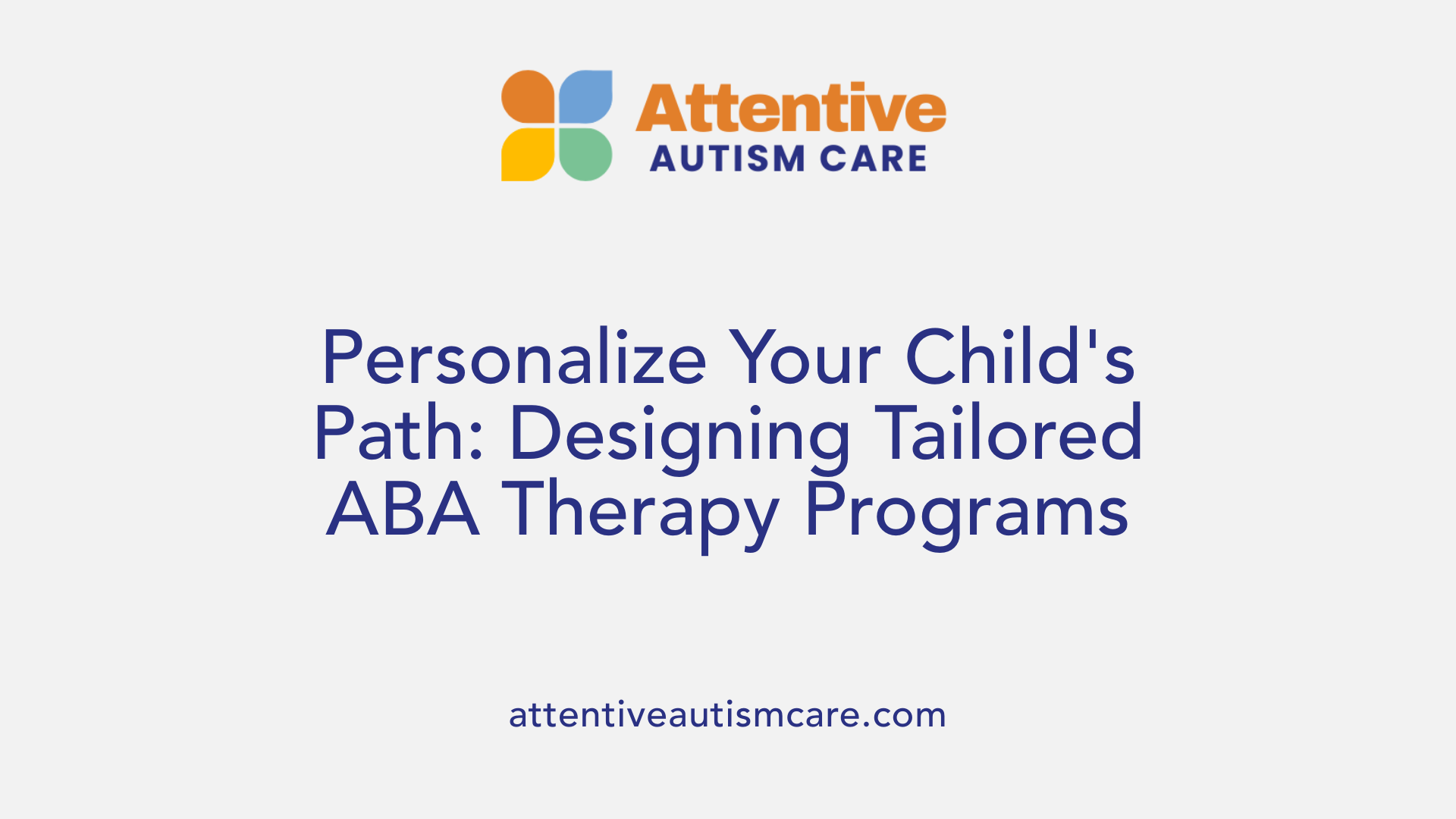
How is an ABA therapy program designed and tailored for each individual?
Designing an ABA therapy program begins with a thorough, multi-faceted assessment process. This includes direct observation of the child in various settings, interviews with family members and educators, and standardized tools such as the Autism Social Skills Profile (ASSP). These help identify the child's unique strengths, challenges, and behavioral triggers.
From this foundation, a Board Certified Behavior Analyst (BCBA) crafts a personalized treatment plan. The plan sets clear, measurable goals targeting areas like social skills, communication, and behavior management. It combines both skill-building and behavior reduction strategies tailored specifically to the child's profile.
Assessment components
- Observation: Watching the child in natural environments to understand social and communication behaviors.
- Interviews: Collecting insights from parents, teachers, and therapists.
- Standardized measures: Using tools like ASSP to quantify social skills levels.
- Functional behavior analysis: Determining causes and triggers of challenging behaviors.
Customization of treatment plans
- Emphasis on individual strengths (e.g., humor, music, visual talents) to promote engagement.
- Integration of methods such as peer-mediated instruction, social stories, video self-modeling (VSM), and role-playing.
- Regular data-driven monitoring allows modifications to fit the child's evolving needs.
- Structured social activities with clear expectations help improve competence gradually.
Family involvement and monitoring progress
Families play a vital role in ABA therapy. Collaboration between therapists, parents, and educators ensures consistency across home and school environments. Parents receive coaching to reinforce social skills and positive behaviors outside of therapy sessions.
Ongoing data collection guides progress evaluation. Adjustments to intervention strategies are made based on observed gains or barriers, ensuring dynamic support tailored to each child's journey toward social development and independence.
Core ABA Techniques for Teaching Social Skills
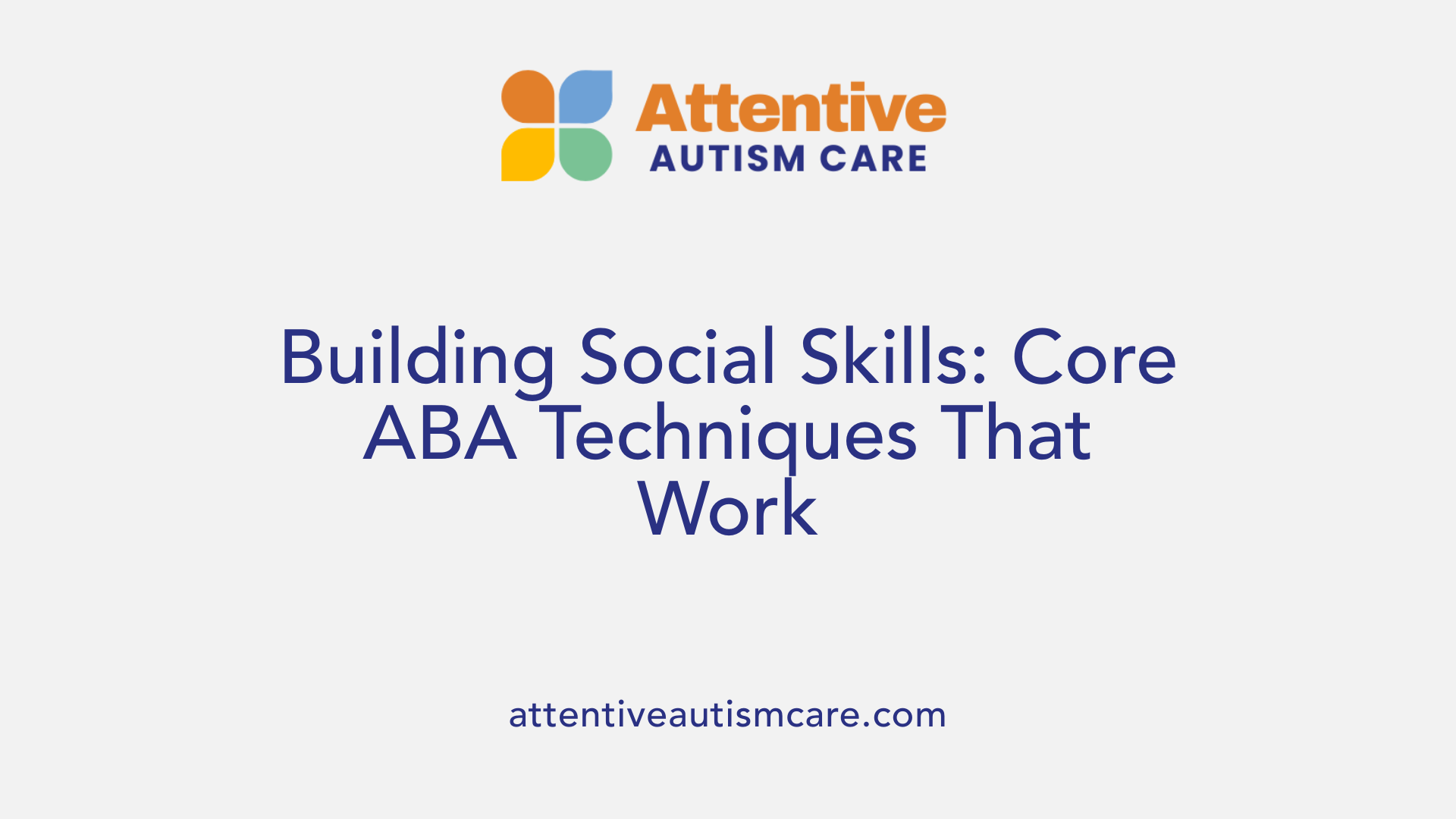
What types of techniques and methods are commonly used in ABA therapy?
ABA therapy employs several targeted techniques to teach social skills effectively. One foundational method is Discrete Trial Training (DTT), which involves breaking down skills into small, manageable steps and teaching each step through repeated trials. This structured approach, paired with clear instructions and immediate reinforcement, helps children learn specific social behaviors systematically.
Natural Environment Teaching (NET) complements DTT by promoting skill acquisition in everyday settings, allowing children to practice social interactions during natural activities. This approach encourages generalization of skills beyond clinical settings, making social learning more meaningful and applicable.
Modeling and reinforcement strategies are integral to ABA therapy. Therapists and peers model appropriate social behaviors, which children then imitate. Positive reinforcement, such as praise, tokens, or preferred activities, motivates children to engage in and maintain these behaviors. Through consistent reinforcement, children with autism develop better timing, attention, and communication skills essential for social interaction.
Together, these ABA techniques create a personalized, evidence-based framework that supports the development of social competencies in children with autism by combining structure, natural practice, and motivational strategies.
Incorporating Strengths and Interests to Enhance Social Engagement
Using Humor, Music, and Visual Talents
Children with autism often have unique strengths such as a good sense of humor, musical abilities, or visual talents. Leveraging these strengths in social skill interventions can make social interactions more engaging and enjoyable. For example, incorporating music or visual arts activities creates common ground for social connection and allows children to express themselves in a comfortable way.
Peer Modeling
Pairing children with autism with peers who display strong social skills promotes natural social learning. This method encourages children to observe and imitate positive social behaviors without casting peers as formal "teachers." The approach fosters organic interactions, which can reduce feelings of being singled out and help the child acquire social skills more naturally.
Structured Group Activities
Creating small, structured social groups or activities enhances participation and builds social confidence. Activities like lunch groups with specific discussion topics provide clear expectations and frameworks. This structure supports children in practicing social interactions within a predictable and supportive environment, minimizing overwhelm and enabling gradual skill-building.
By integrating a child's interests with peer support and structured social opportunities, interventions become more effective and enjoyable, promoting sustained social engagement.
Teaching Friendship Skills Beyond Basic Social Interaction
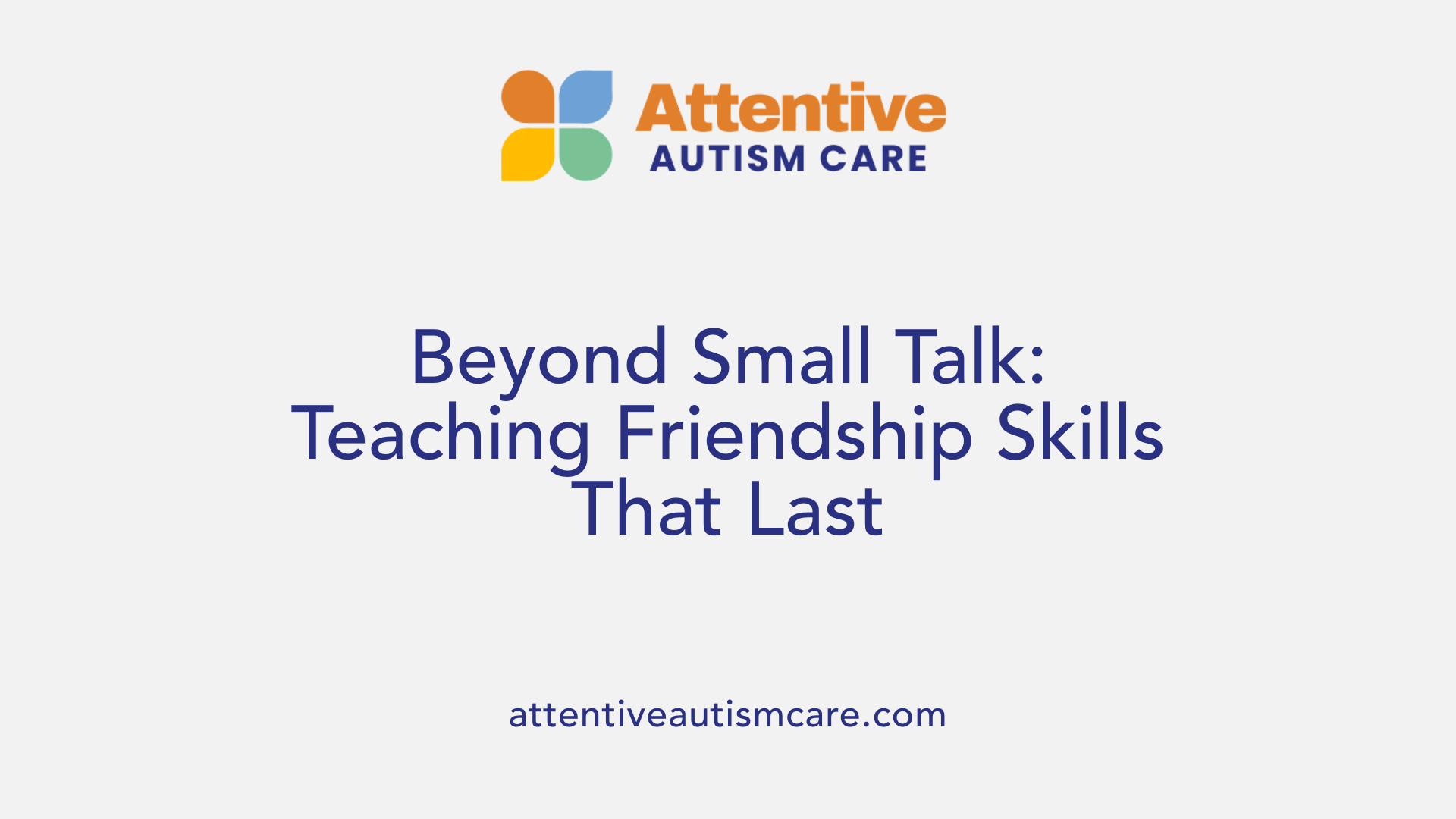
What Are Friendship Interventions for Children with Autism?
Friendship interventions go beyond teaching isolated social skills by focusing on helping children and adolescents with autism spectrum disorder (ASD) make and maintain meaningful friendships. These programs typically use behaviorally based methods such as direct instruction, modeling, and role-play activities to enhance social competence in more natural and sustained ways.
How Are Shared Interests Identified and Used?
A vital component of these interventions is helping participants identify shared interests with peers. Recognizing common likes and activities becomes a foundation for building relationships. Once these interests are uncovered, children with ASD are encouraged to organize social opportunities like playdates or group activities around them. This process fosters authentic engagement that reflects the child’s preferences, making social interactions more motivating and enjoyable.
Why Is Organizing Social Activities Outside Therapy Important?
Organizing social activities outside of therapy sessions helps reinforce and generalize the skills learned in structured settings. Opportunities such as community outings, lunch groups, or informal get-togethers provide real-world contexts for practicing social behavior. Adult mediation often plays a role here, with parents, teachers, or therapists supporting and coaching children to sustain friendships beyond the clinical environment. These extended experiences help reduce social isolation and promote ongoing prosocial behavior and emotional well-being.
By creating structured yet flexible frameworks that encourage peer interaction based on common interests, friendship interventions provide children with ASD the tools to build lasting connections that enrich their social lives.
The Importance of Empathy and Reciprocity in Friendship
Understanding Others' Perspectives
Empathy is fundamental in building meaningful friendships for children with autism. Teaching children to understand others' perspectives helps them appreciate feelings and intentions beyond their own experiences. This skill supports more balanced and reciprocal interactions, allowing children to respond appropriately in social situations.
Recognizing Facial Expressions and Non-Verbal Cues
A vital part of empathy involves recognizing facial expressions and other non-verbal cues. Children with autism often struggle with interpreting these signals, which can lead to misunderstandings. Structured teaching methods focusing on identifying emotions through facial expressions and body language can improve social communication and enhance peer relationships.
Social Narratives and Cartooning
Tools like social narratives and social cartooning serve as effective teaching aids. Social narratives provide clear explanations of social rules and expectations, while cartoon-based storytelling visually demonstrates social scenarios and responses. These aids make abstract concepts more concrete, helping children grasp complex social cues and practice empathy in a controlled, supportive setting.
Role of Adult Mediation and Collaborative Support Systems
Collaboration with Parents, Teachers, and Therapists
Effective social skill development in children with autism involves active collaboration among parents, teachers, and therapists. This team approach ensures that interventions are consistent and reinforced across home, school, and therapy settings. Working together allows adults to tailor strategies that best fit each child's unique strengths and challenges while providing a unified support network.
Family Coaching and School-Based Services
Family coaching plays a crucial role by equipping parents with techniques to support social growth during everyday interactions. ABA therapy centers often include family training sessions alongside direct child instruction. Similarly, school-based ABA services offer opportunities to practice social skills naturally, incorporate peer modeling, and support generalization of skills outside therapy. These combined efforts help children bridge the gap between structured clinical settings and real-world social environments.
Consistent Approaches Across Environments
Maintaining consistent social skill strategies across environments helps reduce confusion and anxiety for the child, promoting smoother transitions between settings. Adult mediation often includes coaching teachers and family members to use the same visual supports, reinforcement systems, and social narratives. This uniformity maximizes the child's learning potential and fosters greater independence in social situations.
The synergy of adult mediation and collaboration creates a supportive framework where children with autism can confidently develop social competence, build friendships, and enhance overall well-being.
Utilizing Video Self-Modeling to Promote Social-Communication

What is Video Self-Modeling (VSM) and its Purpose?
Video Self-Modeling (VSM) is an intervention technique where children with autism watch videos of themselves successfully performing targeted social behaviors. The goal is to help students learn and improve social-communication skills by observing their own positive actions, which reinforces their ability to replicate these behaviors in real life.
What Evidence Supports the Effectiveness of VSM?
Research has established VSM as an evidence-based approach for teaching social skills to children with autism. Studies demonstrate that observing oneself in successful social interactions enhances motivation and provides clear visual cues that support learning. This method transcends traditional modeling by leveraging self-recognition, making the learning process more personalized and impactful.
How Does VSM Facilitate Rapid Skill Acquisition and Maintenance?
VSM is known for producing quick improvements in social-communication abilities. The combination of visual learning with self-modeling aids in faster acquisition of new skills compared to some other interventions. Moreover, these gains tend to maintain over time, helping children generalize the learned behaviors in various social settings.
By integrating VSM into therapy plans, such as those offered by centers employing Applied Behavior Analysis (ABA), children benefit from tailored interventions that build confidence and social competence through repeated, positive reinforcement of their own successful interactions.
Balancing Skill Acquisition and Emotional Well-Being in ABA Therapy
Distinguishing Skill Deficits vs Performance Deficits
In ABA therapy, it is essential to differentiate between skill acquisition deficits—where a child lacks the ability to perform a social behavior—and performance deficits, where the child may have the skill but does not use it due to factors like anxiety or low motivation. Tailoring interventions based on this distinction ensures that therapy targets the right challenges, either by teaching the skill itself or by addressing barriers to performance.
Addressing Anxiety and Motivation
Many children with autism experience anxiety or feel overwhelmed in social settings, which can hinder their performance of learned skills. ABA strategies incorporate positive reinforcement and gradual exposure to social situations, creating structured environments where children can practice at their own pace. Motivation is enhanced by integrating the child’s interests and strengths, such as music or humor, to foster engagement and reduce stress.
Controversies and Ethical Considerations
ABA therapy, despite its evidence-based benefits, has faced criticisms concerning its applications. Historically, some aversive methods were used but are now rejected. Modern criticisms include concerns about therapy being too repetitive or demanding, potentially causing stress and promoting masking behaviors that compromise the individual’s mental health. Some autistic advocates worry about loss of autonomy and the neglect of sensory or emotional needs, especially when behaviors like stimming are discouraged without understanding their function.
Ethical practice in ABA requires personalization, empathy, and respect for the child’s dignity, prioritizing emotional well-being alongside skill development. Collaboration with families and continuous assessment help ensure therapy supports independence and authentic social engagement rather than conformity.
Long-Term Benefits of Early Social Skill Development
Improved Friendships and Emotional Resilience
Early social skill development, particularly through programs like ABA therapy, equips children with autism to form and maintain meaningful friendships. Structured friendship interventions help children identify shared interests and foster social activities beyond therapy, significantly reducing feelings of social isolation. These supportive relationships contribute to emotional resilience, enabling children to better navigate social challenges throughout their lives.
Academic and Career Readiness
By enhancing social communication and interaction skills, early social development supports success in academic settings and prepares children for future career environments. School-based ABA services and peer-mediated instruction provide natural contexts for practicing real-world social skills, boosting confidence and competence. This foundation facilitates collaboration, problem-solving, and adaptability—crucial traits for academic achievement and workplace integration.
Higher Self-Esteem and Prosocial Behaviors
Developing social skills from an early age nurtures self-esteem, as children experience positive social interactions and reinforcement. As they learn empathy, reciprocity, and recognition of non-verbal cues, their prosocial behaviors expand, fostering generosity, cooperation, and kindness. These qualities not only improve interpersonal relationships but also enhance overall psychological well-being.
These long-term benefits highlight the importance of early and targeted social interventions, affirming that investments in early social skill development contribute to lifelong gains in social, emotional, and functional domains for children with autism.
Empowering Autistic Children Through Tailored Friendship Support
Supporting autistic children in developing friendship skills is a multifaceted endeavor that requires personalized, evidence-based approaches. ABA therapy stands out as a scientifically grounded method that can foster social competence by building critical skills through structured and naturalistic techniques. However, successful friendship development also hinges on leveraging each child's unique strengths, creating supportive peer interactions, and fostering empathy and reciprocity. Collaboration among families, educators, and therapists is essential to create consistent, nurturing environments where children with autism can build confidence, form meaningful relationships, and thrive socially. Addressing both skill acquisition and emotional well-being ensures that interventions are respectful and empowering, paving the way for lasting friendships and enriched quality of life.
References
- Autism and Social Skills Development
- Helping Autistic Children Build Social Skills
- Making (and Keeping) Friends: A Model for Social Skills ...
- Social Skills: Helping Children Build Meaningful Connections
- Friendship interventions and measurements in children ...
- Applied Behavior Analysis (ABA)
- Who Qualifies for ABA Therapy: Eligibility Guide
- Types Of ABA Therapy Jobs And Their Degree Requirements



